 Amazon
Amazon
echo dot (3rd Gen) + Fire TV stick lite for just $89
Ends
Enjoy Alexa in more places when you purchase an echo dot (3rd Gen) and all-new Fire TV stick lite for just $89. While stocks last. T&Cs apply.
We’re reader-supported and may be paid when you visit links to partner sites. We don’t compare all products in the market, but we’re working on it!


The best smart speaker goes to Sonos, thanks to its top rated design and great value for money. 92% of Aussies recommend a Sonos smart speaker.
 Amazon
Amazon
echo dot (3rd Gen) + Fire TV stick lite for just $89
Ends
Enjoy Alexa in more places when you purchase an echo dot (3rd Gen) and all-new Fire TV stick lite for just $89. While stocks last. T&Cs apply.
At its most basic, a smart speaker is a voice-activated audio device that will listen for voice commands and execute them to the best of its abilities. This can be something as simple as playing the song you requested, or it could be as involved as you asking for the quickest route to the airport and the speaker determining it for you based on current traffic conditions.
The first smart speaker, Amazon Echo, launched in the US back in 2014. Since then multiple manufacturers have come to the table with smart speakers of their own. There are currently over 30 models to choose from, ranging from entry-level speakers that fit in your palm to bulky entertainment hubs with inbuilt LCD displays.
The brain - and voice - of a smart speaker is delivered by its inbuilt virtual assistant. This is a sophisticated form of AI software that responds to your commands with appropriate actions and responses. Thanks to cloud learning technology and frequent software updates, virtual assistants are becoming increasingly adept at understanding spoken language. You no longer have to talk slowly and robotically to get them to do what you want.
As they rely on cloud technology, smart speakers require a constant internet connection to provide voice-activated functionality. Without the virtual assistant, a smart speaker is just a regular speaker. Inside its body, your average smart speaker packs one or more audio speakers, usually in the form of woofers and tweeters, along with an array of microphones for detecting voice commands.
With an increasing number of options out there, not to mention the frequent updates to existing devices, figuring out which smart speaker to buy can be a little confusing. To help you make an informed decision, we've collected and compared the key features of smart speakers available here in Australia. We've also tracked down the best smart speaker deals to save you money.
Below you will find some of the most popular smart speakers currently on the market. Click on the product names to read our expert reviews.
Despite what the name may suggest, smart speakers can do a whole lot more than simply play music. Thanks to the impressive voice-recognition software powering Google Assistant, Amazon Alexa and Apple's Siri, smart speakers that run on these virtual assistants can perform a wide array of tasks including, but not limited to, the following:
And of course, they can play music from a variety of online streaming services such as Spotify, Apple Music and Google Play Music.
What makes smart speakers so compelling, though, is the fact that their capabilities aren't limited to those they come with out of the box. Google Assistant, Alexa and Siri are constantly developing new skills, allowing them to access a broader range of online stores and services, to deliver more accurate and more detailed answers to your questions and to connect with a wider variety of smart devices.
These skills don't just come from Google, Amazon and Apple, either. All three provide a means for app developers to build smart-speaker functionality into their own apps and services. Because of this, skills can be built and updated quickly without the bottleneck of a single company's approval process.
The decentralised nature of these skills also means they're less bound by hardware than a lot of modern devices. The smaller, cheaper Echo Dot, for example, can do everything the bigger Echo can – the only concession is the Echo Dot's less-powerful speaker. From a functionality standpoint, this means you don't have to worry about upgrading to a newer model to get the latest software features.
The three key names in smart speakers are Amazon, Google and Apple. You can buy physical smart speakers from other manufacturers, but they all use virtual assistants developed by one of the aforementioned companies. (The Sonos One uses Amazon Alexa and Google Assistant, for example.) Both Google and Amazon offer multiple models of their speakers, which feature smaller or larger internal speakers and different designs.
For the most part, the actual hardware matters less than the virtual assistant it plays home to. As such, you only need to consider three main options: Google Assistant, Amazon Alexa and Apple's Siri.

As the first of the big three to reach Aussie shores, Google Assistant has a strong foothold in the Australian smart speaker market. Since its launch, it has steadily expanded its repertoire with features like hands-free calling, audiobook support and the ability to act as an intercom when you own two or more Google Assistant devices.
Google hasn't been shy about getting Google Assistant out there, either. Numerous devices, including select smartphones, smart TVs and Google's own Chromecast HDMI dongles, are compatible with Google Assistant, allowing them to link up and respond to your voice commands even if they don't support it on their own.
By default, Google Assistant activates with the command phrases "Ok Google" and "Hey Google", and you can tie it to your Google Account for more personalised responses along with the ability to distinguish your voice from anyone else who uses the same device.
Google recently re-branded some of its Google Home range as 'Google Nest'. This is to align it with the company's other smart home products which include smart displays, WiFi routers, smoke alarms and security systems. Apart from the name change, the products remain the same.

Despite enjoying a two-year head start in the US, Amazon Echo was late to the party in Australia – it launched six months after Google Home. On the plus side, this meant we received a matured version of Alexa, which is arguably the most intelligent of the three main virtual assistants. (Although a case could be made that Google has surpassed it.)
Along with the standard retinue of smart functionality, Amazon Alexa boasts the largest array of third-party skills of any assistant on the market. There are already thousands of apps available for extending Alexa's abilities beyond what it includes out of the box, and many are tailored specifically for Australia. Unfortunately, a large number of Alexa skills aren't currently available on the Amazon Australia website which may cause compatibility issues with your device.
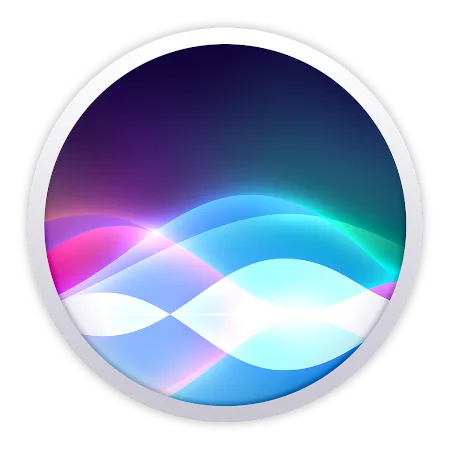
Apple's Siri is unarguably the most famous virtual assistant thanks to the iPhone version. However, it's still a ways behind the competition in the smart speaker game. In traditional Apple style, Siri is only available on Apple's own devices, leaving you with just a single option for a Siri-enabled smart speaker: the Apple HomePod.
As the flagship device for Siri on smart speakers, the HomePod doesn't make the greatest first impression. Its support for basic functionality is lacking not only when compared to Google Assistant and Amazon Alexa, but even compared to what Siri can do on the iPhone as well. For instance, Siri can only play songs from Apple Music, with no direct way of linking your Spotify or Google Play Music account. Also, it only supports a single user, and its ability to understand and answer your queries is decidedly limited in comparison to Google and Amazon's assistants.
On the plus side, Apple HomePod provides a superior audio experience to other first-party smart speakers and is very simple to use. If you're already ensconced in the Apple ecosystem, the lack of compatibility with other services may be less of an issue.
Like most products and services these days, there is no "best" smart speaker for all situations. Your brand affinity, budget and how you're going to use it all influence which speaker will best serve your needs. Even the decor in your house might dictate which speaker will fit you the best. The standard white design of Google Home looks fine when paired with a similarly light-coloured room, but it can seem a little out-of-place when stationed amidst darker furniture.
Nevertheless, if you're after a quick overview of what each speaker does best and worst, take a look at the comparison below:
| Pros | Cons | ||
|---|---|---|---|
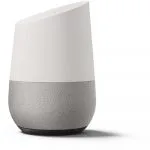 | Google Home |
|
|
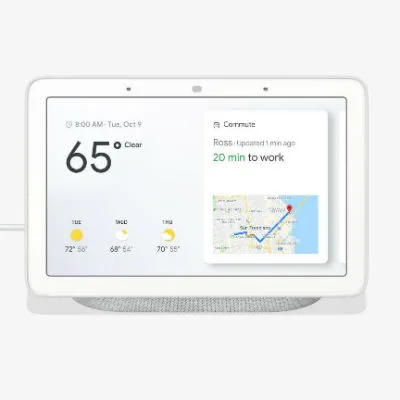 | Google Home Hub |
|
|
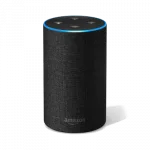 | Amazon Echo |
|
|
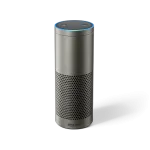 | Amazon Echo Plus |
|
|
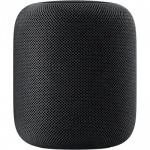 | Apple HomePod |
|
|
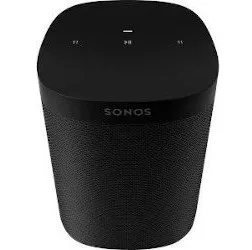 | Sonos One |
|
|
When choosing a smart speaker, consider the following factors:
Your new smart speaker won't do you much good if it can't understand your accent or has trouble converting your voice commands into useful answers. If you can, test out prospective speakers at a store or a friend's place before plonking down your cold hard cash. If you don't, you might be left with nothing more than a stubbornly ignorant and expensive paperweight.
Along with the varying audio capabilities of the three main speakers, Google and Amazon both offer smaller and cheaper models that cut back on audio quality even further. If you only plan on using your new speaker to issue commands and ask questions, these cheaper options are an excellent choice, but if you want to crank up your favourite tracks so you can hear them clearly down to the other end of the house, you'll want to opt for a speaker with more audio oomph.
New smart home devices seem to crop up every other week, and this can make it tricky for hub devices like smart speakers to maintain compatibility with them all. If you've already kitted your house out with a bunch of smart devices, you'll want to make sure that your new smart speaker supports them – preferably through native support. Otherwise you'll have to spend hours devising hacky work-arounds or simply abandon the effort and miss out on voice control altogether.
Apart from speaker quality, are there any other hardware features you might need? Premium specs like touch screens and wireless portability usually cost extra, so consider if you actually need them before making your purchase.
Tech is rarely cheap, and while Google Home Mini and Amazon Echo Dot offer an affordable entry point into the smart speaker market, you'll want to be aware of their concessions before discounting their more expensive brethren. Audio quality and voice detection suffer in these cheaper models, so be sure to manage your expectations along with your budget.
Because the virtual assistants powering all three smart speakers are stored in the cloud, they're able to constantly evolve with new skills over time. This means it's worth considering not only the features a smart speaker has now, but the features it could get in the future when deciding which one to buy. See what the major manufacturers are promising and what their track record for supporting older devices is like.
The most convenient way to buy smart speakers is to shop online. Regardless of your budget or specific requirements, retailers generally offer the same deals and products online as they do in-store. In some cases, they'll also offer exclusive online-only prices and discounts. You can see some of the best online shopping options below.
| Total Score | Overall rating | Value for Money | Design | Ease of use | Sound quality | |
|---|---|---|---|---|---|---|
| Ultimate Ears (UE)* | 8.75 | 4.75 | 4.75 | 4.75 | 4.75 | 4.75 |
| Sonos | 8.43 | 4.67 | 4.50 | 4.58 | 4.50 | 4.42 |
| Apple | 8.27 | 4.50 | 4.31 | 4.50 | 4.48 | 4.56 |
| 8.27 | 4.45 | 4.51 | 4.47 | 4.58 | 4.55 | |
| JBL | 8.14 | 4.39 | 4.33 | 4.33 | 4.67 | 4.44 |
| Sony | 8.10 | 4.41 | 4.23 | 4.36 | 4.33 | 4.33 |
| Bose | 8.09 | 4.43 | 4.19 | 4.33 | 4.48 | 4.43 |
| Amazon | 7.96 | 4.34 | 4.32 | 4.36 | 4.24 | 4.38 |
| LG | 7.92 | 4.35 | 4.12 | 4.24 | 4.12 | 4.24 |
| Other | 7.86 | 4.33 | 4.33 | 4.33 | 4.17 | 4.17 |

If Alexa is your smart home companion of choice, the Echo Show 5 2nd Gen delivers a simple visual and voice experience – and that's all.
The upgraded Echo Show 8 2nd Gen benefits a lot from an improved and smart tracking camera.
Google’s Nest Hub benefits from better sound and Thread compatibility, but the much-hyped sleep tracking is too erratic to be truly trustworthy.
The Echo Show 10 3rd Gen’s ability to spin itself around to face you is a neat trick, but Amazon hasn’t done enough to make it a must-have feature.
Amazon’s updated Echo Dot (4th Gen) benefits from its redesigned shape in a design sense, but there's not much point buying one while the cheaper third-generation model is still available
Amazon's updated Echo speaker has a cute spherical design and great microphone pick-up.
Google's Nest Audio delivers great sound output for a smart speaker in its price range.
If you're already heavily in the Alexa ecosystem, the Echo Auto makes it simple enough to get it running in your car – but it's beset with a lot of software bugs that make it distinctly second-rate.
How we determine smart speaker review scores for design, performance, and overall score.
The Echo Studio is Amazon’s best-sounding smart speaker, but the Studio’s most impressive features aren’t available in Australia.